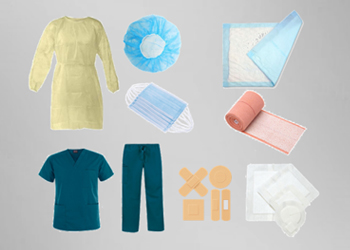
Ultrasonic fabric sealing is widely used in the manufacturing of disposable textile products like surgical gowns, masks, shoe covers, and hair caps. The sealed seams on these products provide a reliable barrier against contaminants and contribute to overall hygiene and safety.

Ultrasonic fabric sealing is commonly used in the manufacturing of non-woven fabrics, where it helps bond fibers together to form a cohesive and stable structure.

Ultrasonic fabric sealing is widely used to create strong and airtight seals in plastic bags, pouches, and other flexible packaging materials. This process ensures that the contents are securely enclosed and protected from external factors such as moisture and contaminants

Ultrasonic fabric sealing is employed in the assembly of car seats, where it joins different sections of fabric to create a seamless and secure bond. This technology ensures that the seat covers remain tightly attached to the foam padding, providing a clean and professional appearance.

In the context of personal protective equipment, ultrasonic fabric sealing is utilized to manufacture items like hazmat suits, aprons, and protective sleeves, ensuring high levels of protection and integrity in critical situations.

Ultrasound can laminate or punch different materials in medical dressings to ensure that the product is soft, breathable, and sterile.

Ultrasonic fabric sealing is employed in sportswear and activewear manufacturing to create durable and comfortable clothing with no visible stitching that might cause discomfort during physical activities.

Airbags are crucial safety components in modern vehicles. Ultrasonic fabric sealing is utilized to bond the various layers of the airbag fabric, ensuring the airbag deploys correctly and maintains its integrity during a collision.

Ultrasonic sealing is also suitable for the outer packaging of the medical industry, because of the effect of ultrasonic sealing, air tightness and water tightness are well guaranteed.